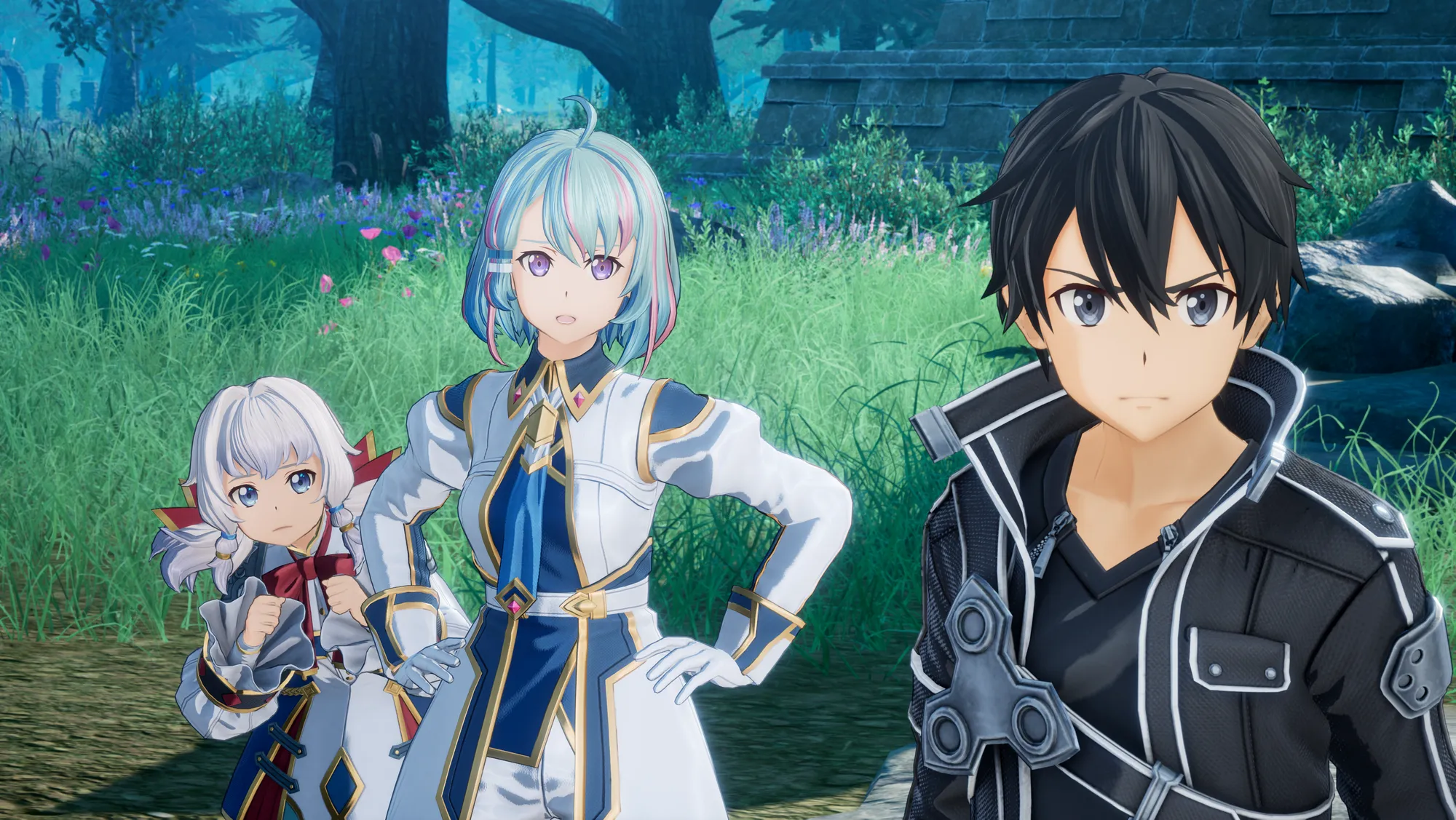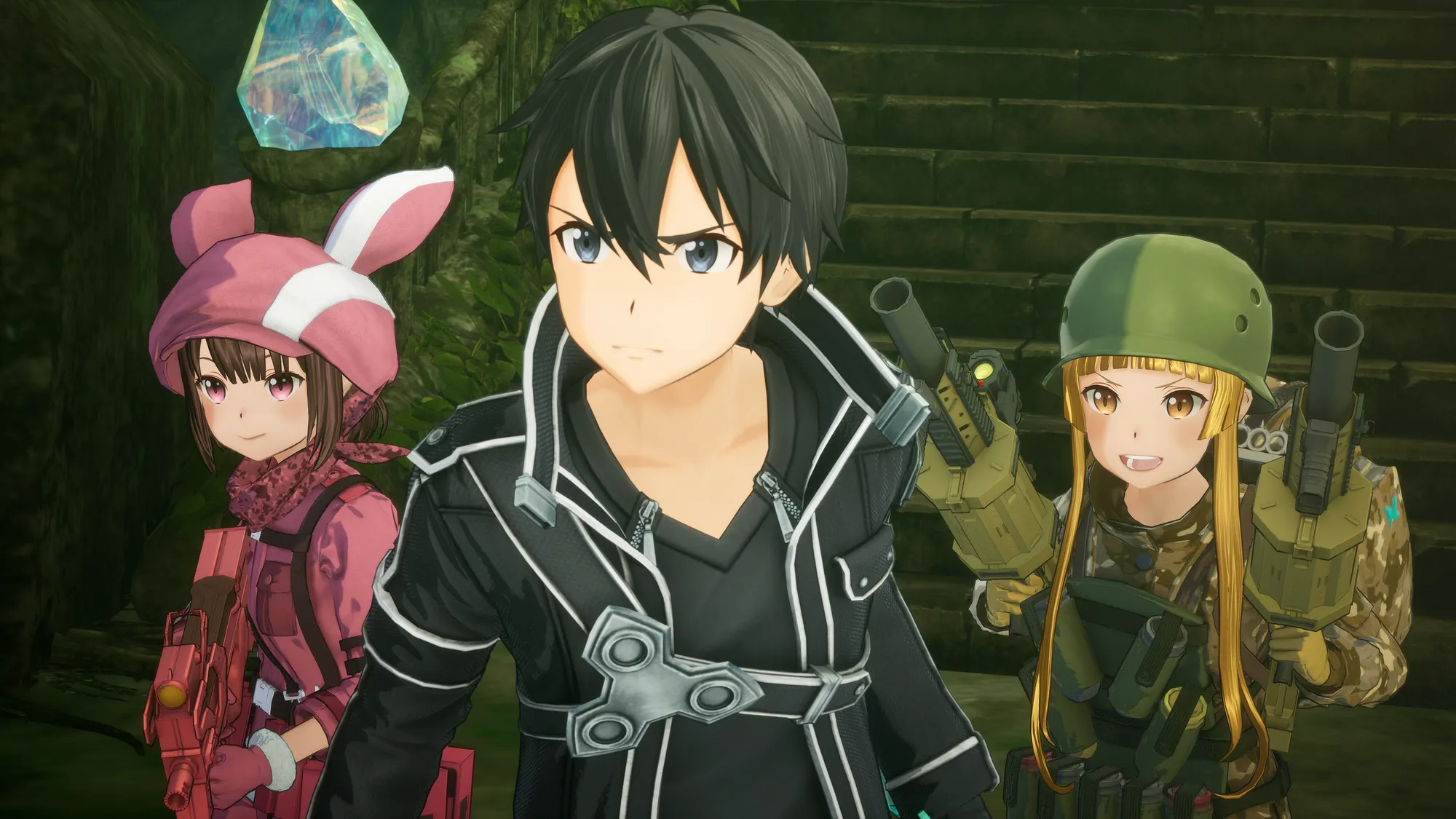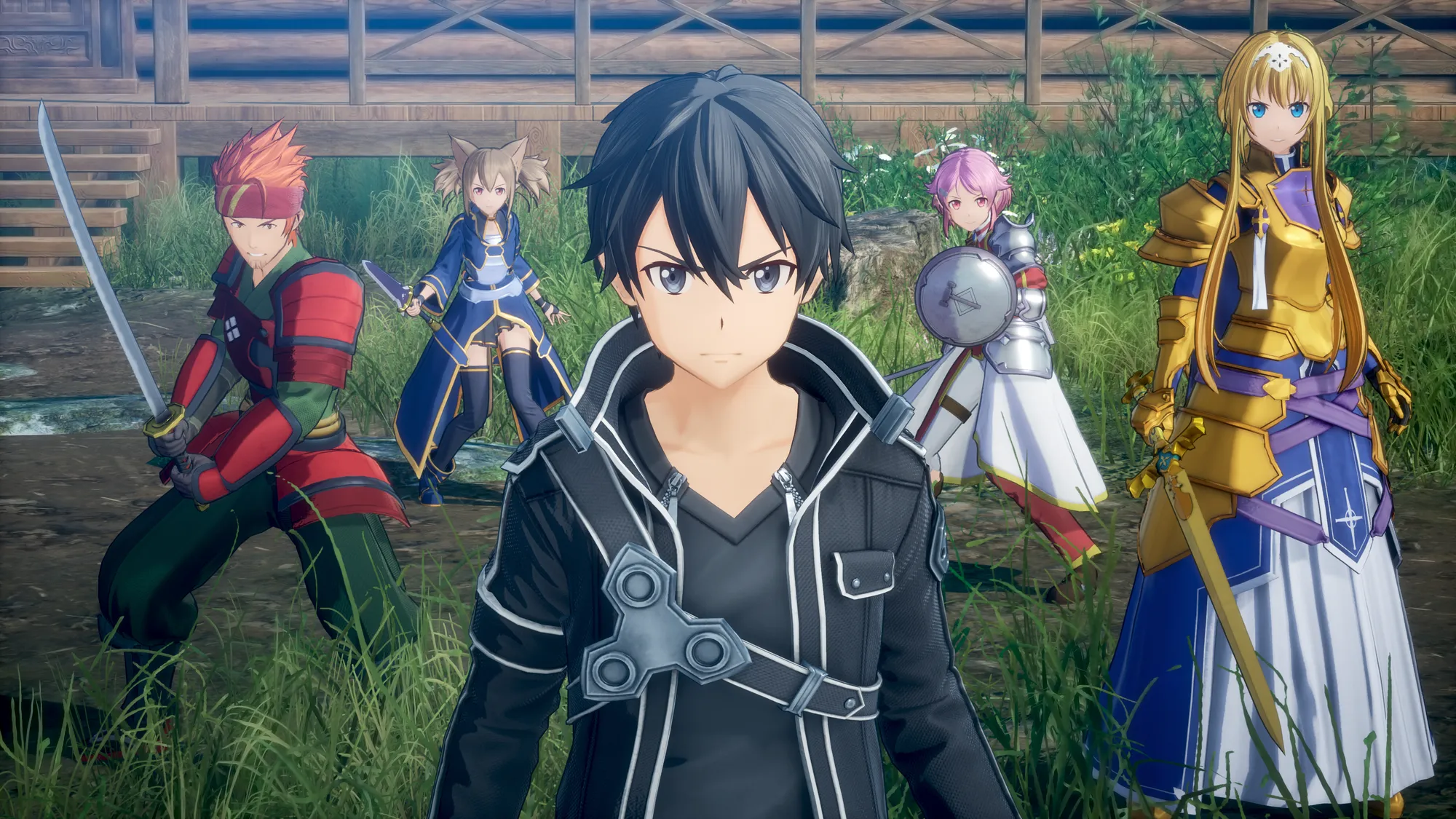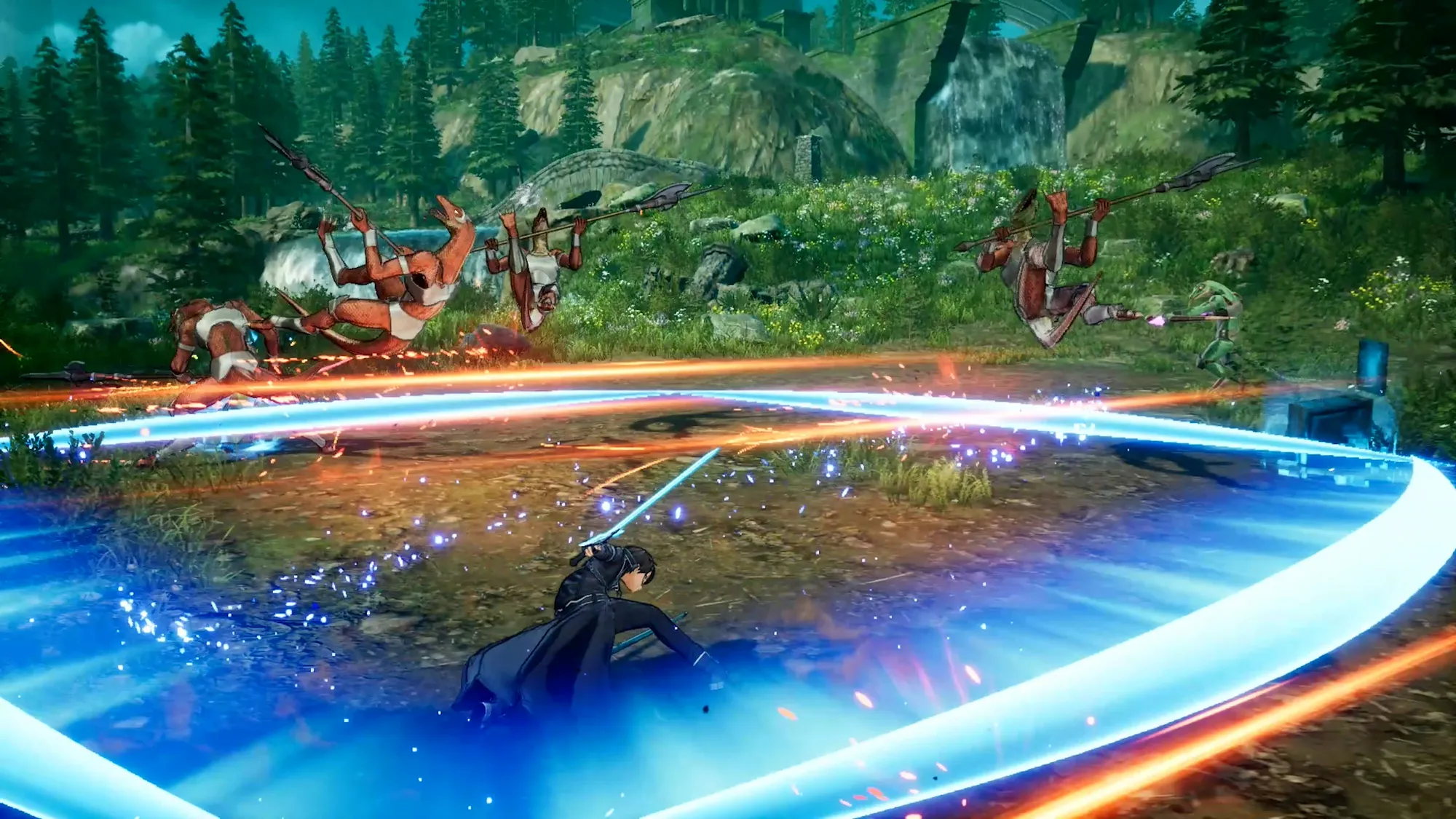Media franchises set in virtual worlds tend to thrive in formats where creators have full control over how those worlds are depicted—like light novels, manga, and anime. Video games, however, have always been trickier territory. From the early days of the .hack franchise (which I highly recommend checking out), players had to suspend disbelief, accepting the somewhat clunky and limited gameplay and visuals of the time as a representation of a sophisticated futuristic VR MMORPG. Today, the anime-to-video game equivalent of .hack is shaping up to be Reki Kawahara’s Sword Art Online, which has built up a chronology of video games spanning multiple titles since the PlayStation Portable era. Loosely authentic to the original narrative but geared towards including the wider SAO cast wherever possible, these action-adventure games have generally been middling, though a few have shown some charm. In 2024, the series takes a new direction with Sword Art Online: Fractured Daydream, embracing a live-service model similar to those many other franchises have adopted in recent years. This new entry features battles with up to 20 players at once and reunites characters and settings from across the series’ history, including protagonists and antagonists alike. Will it stand out above previous entries, or is it another average addition? Read on to find out!
Sword Art Online: Fractured Daydream introduces an original, game-exclusive storyline set at an undefined point after the events of Sword Art Online: Last Recollection. This new narrative draws in well-known characters from all major arcs of the series—from Aincrad to Alicization—bringing together around 20 key characters (plus a few newcomers). The story begins within ALfheim Online and centres around Galaxia, a mysterious new system that lets players revisit pivotal moments from their past experiences. When Galaxia malfunctions, it causes a rift that pulls characters from different points in time and virtual worlds into a single interconnected realm. This unexpected convergence sees characters who would otherwise never meet—some of whom are either deceased or incapacitated—joining forces to uncover the mysteries that await. The story unfolds mainly through lengthy visual novel-style dialogues, which, while rich in detail, don’t always maintain an engaging pace or add much depth to the events.

Despite its ambitious scope, Sword Art Online: Fractured Daydream struggles to recapture the magic of SAO’s most beloved settings. The game misses the mark in balancing accessibility for newcomers, diving straight into a tangled web of overlapping character arcs and series-specific references that may leave less familiar players feeling lost—or constantly reaching for the skip button. The character roster, though extensive (albeit slightly pared back from previous game instalments), offers limited interactions that feel largely superficial, with little meaningful development or fresh insight into the characters’ personalities. These crossovers, crafted primarily as fan service, might offer a nostalgic thrill for longtime fans of the series, but their impact is limited by the lack of substantial narrative progression.
Sword Art Online: Fractured Daydream captures the visual essence of the anime with impressive character models, vibrant special effects, and smooth animations that reflect the series’ iconic style. Players have the option to customise their favourite SAO characters with unique outfits, accessories, and weapons, adding a personalised flair to the game’s look—though the reliance on premium currency to unlock many of these costumes, as seen in live service games, detracts from the experience. Unfortunately, the environmental design falls short; many areas feel sparse, with limited interactivity and uninspired layouts. Indoor levels, in particular, are often plain and lack the intricate detailing that would match the high-quality character models, creating a noticeable disconnect in the visual experience.

One of the game’s most distinctive visual elements is its flashy particle effects and elaborate animations during combat. These effects add excitement, making each battle feel dynamic and visually rewarding. However, they sometimes clutter the screen, obscuring crucial visual cues like enemy health and incoming attacks. This cluttered design can create challenges during hectic multiplayer raids, especially with up to 20 players battling on screen. The UI, while generally functional, can also add to the visual confusion, particularly in tracking special ability cooldowns in the heat of battle.
The music in Sword Art Online: Fractured Daydream delivers a high-energy, though somewhat repetitive, orchestral score that complements action sequences well, particularly during intense boss battles. The game also features the original Japanese voice cast from the anime, a tradition carried over from previous game instalments. With many of these voice actors having portrayed their characters for years, the performances are polished and true to the personalities fans know and love. However, as expected, there is no English dub available, which may disappoint some players.

The best way to describe Sword Art Online: Fractured Daydream is as a blend of RPG elements from previous titles with action-packed, hack-and-slash mechanics reminiscent of the Dynasty Warriors series. The game takes players through a mix of semi-open-world environments and more linear dungeons, where parties of one to four characters take on missions ranging from defeating powerful foes to completing various objectives. Characters are divided into six classes—Fighter, Tank, Rogue, Mage, Ranger, and Support—each with unique skills, allowing players to switch up roles from heavy-hitting brawlers to swift ranged attackers. The class system adds a layer of diversity to the combat, making each character feel distinct. For example, if you prefer fast characters like Argo (Rogue) and Silica (Support), you’ll feel agile and quick across the battlefield; alternatively, players can opt for classic roles like DPS, Tank, or Mage. This class system shines particularly in multiplayer, enabling varied tactical approaches and combinations. However, despite some sharable skills and gear customisation, the limited variety in abilities and attack patterns can make combat feel repetitive in longer sessions. Players might find themselves relying on the same combos and ultimate attacks, which, while visually impressive, lack the depth to keep gameplay consistently engaging over time.
The single-player campaign captures the core elements of Sword Art Online: Fractured Daydream, progressing from two-character parties to the full ensemble working together to achieve larger goals. Missions are built around straightforward objectives—typically guiding players through linear maps, battling waves of enemies, and facing off against bosses. While this setup initially has its charm, the repetitive mission design and restricted exploration, hampered by invisible barriers, quickly dampens the mode’s long-term appeal. For dedicated fans, the visual novel-style sequences and story elements might offer enough to warrant a single playthrough. However, there’s not quite enough depth to make a long-term commitment to the online mode feel worthwhile, especially over dozens or even hundreds of hours.
The multiplayer component of Sword Art Online: Fractured Daydream sees up to 20 players and CPU unite to undertake raids, co-op quests, and free-roam maps offering fans a quasi-MMO experience. In the 20-player raids, players team up in squads of four to tackle massive bosses with sprawling health bars and intense area-of-effect attacks. In theory, these battles should require coordination and character roles to be well-utilised, especially during the boss’s more punishing attacks – although outside of some limited strategy can also be completed by button mashing. Furthermore, as is common with a lot of these games going online, but even more pronounced given the number of players on the field at any one time, limited in-game communication options mean players are often left to perform their roles independently, which can diminish the sense of teamwork. However, to its credit, the game’s netcode is overall decent, with no issues discovered during any of my playtests.
Progression and character customisation play a big role in keeping players engaged, especially given the grind-heavy nature of Fractured Daydream’s content. Each character has individual levels and a range of gear slots, enabling players to experiment with various builds and passive skills. However, customisation relies on an RNG-based loot system that can sometimes feel more like a mobile game mechanic than a well-balanced RPG. Loot drops are randomised, and players often need to repeatedly grind through missions to gather the right gear pieces. While the constant trickle of rewards may make it appear that there is a reason to come back every day or every so often to try one’s luck, the grind-heavy nature of completing tasks, and a limited number of mission offerings, means the game quickly becomes repetitive.

Sword Art Online: Fractured Daydream is pretty much a game for fans of the franchise, an opportunity to see characters who would otherwise not interact, interact with each other, in a context that is purely there to facilitate it. There are some good aspects of the game: impressive character models, flashy combat, and characters that even if not fleshed out notably here, have more than a decade of experience and lore behind them. The gameplay offers moments of excitement, especially in large-scale multiplayer raids, but the repetitive mission structure, limited exploration, and heavy reliance on grind-oriented mechanics may hinder its lasting appeal. Despite its ambitious attempt to provide a quasi-MMO experience with cross-platform multiplayer, Fractured Daydream feels like it falls short of its potential, leaning heavily on fan service rather than innovation. It may still offer a worthwhile adventure, one that might have benefited from more resources going towards the single-player rather than the online campaign, but it is ultimately another reminder of how tricky it is to translate beloved anime into a fully satisfying game experience – especially when you have such big shoes to fill as Sword Art Online.
Final Score for Sword Art Online: Fractured Daydream
A PlayStation 5 review code for Sword Art Online: Fractured Daydream was provided by Bandai Namco Entertainment Australia to facilitate this review.
Sword Art Online: Fractured Daydream is now available to purchase on the Nintendo Switch, PC, PlayStation 5 and Xbox Series X|S.













